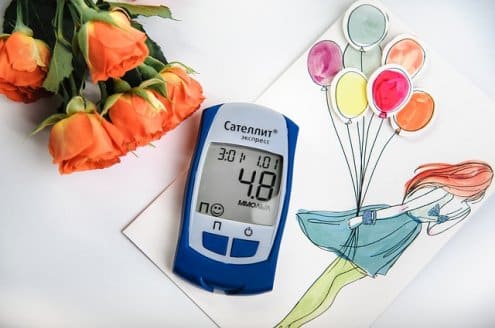Selecting between formulations can feel technical. Understanding regular insulin vs lispro helps you match timing, meals, and routines. This guide explains pharmacology, daily use scenarios, devices, costs, and safety, so you can discuss practical options with your clinician.
Key Takeaways
- Timing gap: lispro acts faster before meals; regular insulin has a slower start.
- Meal flexibility: faster analogs may suit variable schedules and small snacks.
- Dose context: food type, activity, illness, and renal function influence needs.
- Retail variability exists; humalog insulin price walmart can differ by location.
regular insulin vs lispro: Pharmacology and Timing
Both options lower glucose by enabling cellular uptake of sugar. Lispro is a rapid-acting analog engineered to absorb quickly. Regular insulin is a short-acting human formulation with slower onset. Clinicians often call these prandial insulin (mealtime insulin) because doses are planned around food intake.
The practical difference lies in timing and flexibility. Lispro typically starts working within minutes, which may fit modern eating patterns. Regular insulin starts later and peaks later, which may suit predictable meals but requires earlier premeal dosing. For a quick overview of insulin families, see Different Types of Insulin to compare basal and bolus roles.
| Property | Lispro (Rapid-Acting) | Regular Insulin (Short-Acting) |
|---|---|---|
| Usual Onset | ~15 minutes | 30–60 minutes |
| Typical Peak | 1–2 hours | 2–4 hours |
| Duration | 3–5 hours | 6–8 hours |
Label data provide these ranges, but individual response varies. For reference, the FDA-approved Humalog prescribing information and the Humulin R label outline typical onset, peak, and duration.
Onset, Peak, Duration: What That Means Day to Day
Real-world eating patterns vary. High–glycemic index meals can raise glucose rapidly. Lispro may better match fast carbohydrate spikes. Regular insulin’s slower onset may suit structured meals with earlier pre-bolus timing. When schedules change or meals are uncertain, rapid-acting analogs can provide flexibility, though consistent monitoring remains essential.
To understand tactical adjustments, consider how activity and illness influence needs. Exercise may amplify insulin sensitivity; infections can do the opposite. If you use correction doses, timing matters because lispro will reach its peak sooner than regular insulin. For strategies that illustrate timing effects, see Sliding Scale Insulin Therapy for protocol concepts and monitoring reminders. In clinical discussions, lispro vs regular insulin is often framed around how reliably you can pre-bolus before eating.
Dosing Approaches and Sliding Scales
Most clinicians individualize dosing with carbohydrate ratios and sensitivity factors. These methods estimate how much insulin to cover food and correct high readings. Some care plans still use sliding scales, which adjust doses based on glucose ranges. If applied, the protocol’s success depends on accurate timing, meal content, and repeat checks.
For patients comparing protocols, lispro vs regular insulin sliding scale highlights timing pitfalls. Faster onset can lower post-meal spikes sooner; slower onset may require earlier premeal dosing to match digestion. Discuss hypoglycemia risks with your clinician, especially when schedules vary or appetite is uncertain. For background on unit changes and equivalence concepts, see Insulin Conversions for examples of how teams standardize transitions.
Conversions and Substitutions: Clinical Considerations
Switches sometimes occur due to access or formulary changes. Rapid-acting analogs are not identical, and short-acting human insulin differs pharmacokinetically. Any conversion should be supervised, with careful glucose tracking during the first days. Clinical teams often adjust timing first, then evaluate dose changes after several readings.
In practice, humulin r to humalog conversion involves reassessing pre-bolus timing and monitoring peaks. The same principle applies when moving among analogs. Your care team may advise more frequent checks during the transition. For brand comparisons and formulation context, see Humulin vs Humalog to understand positioning of short-acting versus rapid-acting options.
Delivery Methods and Devices
Formulation choice interacts with delivery. Pen devices, vials, and cartridges offer different convenience and dosing increments. Patients with dexterity challenges often prefer pens. Pump users typically select rapid-acting analogs. Training on priming, needle changes, and site rotation helps reduce variability in absorption.
Device features can also shape brand selection. Questions such as insulin lispro vs humalog kwikpen usually reflect pen ergonomics, dose memory, or pediatric options. To compare a common pen, review the Humalog KwikPen description for device-specific considerations. If you use syringes with vials, the Humulin R 100U/mL format shows how short-acting vials are supplied. For storage and component details across formats, see Insulin Cartridges to understand compatibility and handling.
Cost and Access Considerations
Access can drive therapy choices. Formularies, copays, and discount programs vary by plan and region. People often ask how much does insulin cost with insurance because cost-sharing rules differ widely. Even within the same chain, list prices and negotiated rates may change. Confirm coverage details with your insurer before switching formulations.
Manufacturer programs and biosimilar options may reduce costs. Retail programs sometimes offer predictable cash pricing, which can help during coverage gaps. For a broad look at available items and formats, check Diabetes Products to compare vial, pen, and cartridge options. You can also scan Innovations in Insulin Delivery for context on pens and features that may influence value.
Related Rapid-Acting Analogs: Aspart and Glulisine
Several rapid-acting analogs have similar roles. Formulation changes, stabilizers, and kinetics vary slightly by brand. In clinical discussions, lispro vs aspart vs glulisine often centers on onset, peak shape, and pump compatibility. While head-to-head differences are modest, your response can diverge based on absorption, site rotation, and meal composition.
When evaluating alternatives, review evidence and device options. Aspart insulin appears in multiple platforms, and glulisine is offered in pen and vial forms. For practical brand comparisons, see Apidra vs Humalog to understand similarities and distinctions. If you are active and prefer flexible dosing windows, the article Why Fiasp Cartridges Work explains how formulation tweaks may alter absorption speed. For classic analog comparisons, Novolog vs Humalog outlines similarities in dosing approaches and timing.
Safety, Storage, and When to Seek Help
All insulin types can cause hypoglycemia if carbohydrates and activity are not aligned. Teach partners how to use glucagon, and keep fast carbohydrates available. Rotate injection sites to reduce lipohypertrophy, which can change absorption. Store unopened insulin in the refrigerator, then follow product-specific room-temperature guidance once in use.
Labeling details matter for safety. For dosing windows and stability specifics, the FDA label for insulin lispro and the FDA label for regular insulin provide official instructions. Broad practice guidance is summarized annually by the ADA Standards of Care, which outline monitoring, targets, and hypoglycemia prevention. For condition-specific education, browse Type 1 Diabetes or Type 2 Diabetes to align safety practices with your diagnosis. For mixed regimens and dose timing, see Premixed Insulin to understand pros and cautions.
Recap
Lispro is designed for speed and flexibility, while regular insulin offers a slower curve that may suit structured meals. Your daily routine, meal patterns, and coverage determine which profile fits best. Timing and monitoring practices often make a larger difference than brand alone, especially when carbohydrate loads vary.
Work with your clinician to tailor timing, devices, and follow-up checks. Consider insurance rules, availability, and training needs before changing products. When in doubt, verify label instructions and keep consistent records during any transition. Small adjustments, applied consistently, can improve stability without overcomplicating your routine.
Note: This content is for informational purposes only and is not a substitute for professional medical advice.


